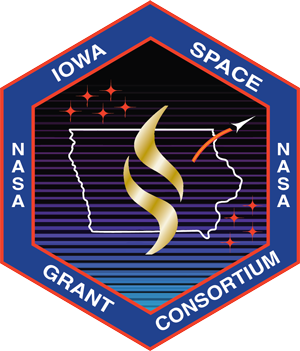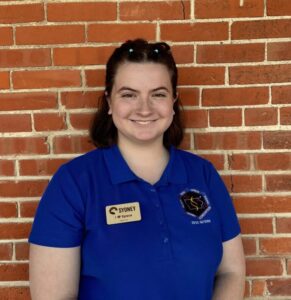Describe what you did during your internship:
My role as an intern at the National Mississippi River Museum and Aquarium this summer was to create and deliver NASA related educational programming for the museum’s “MakerSpace”, an area for all ages to learn and explore various STEM related topics. The MakerSpace includes more “self-guided” stations that are meant to inspire curiosity and innovation. During my internship, I created multiple stations aligning with the many aspects of NASA and the museum. One of these stations was a “wind tunnel” that teaches guests about the Mars Helicopter “Ingenuity.” Guests educate themselves by reading posters with facts about Ingenuity and then attempt to make their own helicopter out of paper. These helicopters are then placed into this make-shift wind tunnel and fly up and out the top. I found that this attracted visitors of all ages and used the opportunity to talk about the use of wind tunnels in aerospace engineering.
Did you achieve your goals?
I believe I achieved both given and personal goals. I was able to inspire and connect with a number of visitors through the developed programming and had a really positive experience doing so. I was able to create a number of successful activities for the MakerSpace that increased the popularity of the area and helped define what the space could be. I also learned a lot of communication and education skills, plus a whole lot about NASA. I was even able to practice some technical skills which aligned with my major such as improving my CAD abilities. All in all, I learned a lot about technical communication and was able to connect with so many types of people which was a success in itself.
Describe positive lessons learned:
This internship has provided me with a lot of positive lessons. Of course, I learned how to communicate complex topics to those with less background knowledge, but I also learned how important working with others is. All of my co-workers were so nice, and it was when we put our heads together that we came up with some of the most successful activities for the museum. I also learned the importance of learning from your failures. Not every activity was a huge success, but it provided me the opportunity to look at what guests liked and what guests didn’t to fully tweak the station into something enjoyable yet still educational.
Describe negative lessons learned:
I think the hardest part of this experience was figuring out the system for the area. The museum’s MakerSpace is relatively new and has had quite a few changes in leadership so no one really knew what the space could be. I challenged myself to make things more in depth, interesting, and eye-catching through more involved activities. When I came to the museum, some unhopeful museum employees called the MakerSpace some not so nice names but by the end, we would get multiple compliments a day on how the area was improving, looked great, and was just so much more engaging than it had been before.
What was the impact of this internship?
As an aerospace engineer, I was always very interested in STEM, but because of my internship, I am so much more enamored with the space aspect of the field. I also feel much more prepared to achieve my goals of being a leader in my field as I feel I can work with others and communicate the scientific topics that I will need to so much better than I could before.

